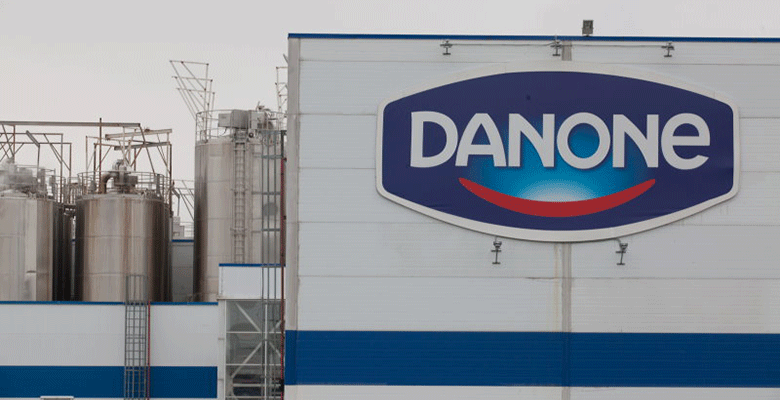First it was green bonds and now we are seeing the emergence green credit.
In February, the French food products company, Danone, announced it had introduced environmental, social and governance (ESG) criteria to its syndicated €2 billion credit facility led by BNP Paribas.
The credit facility now includes a credit line adjustment mechanism based on the ESG criteria provided by third-party providers, Sustainalytics and Vigeo Eiris. It means that if the firm is outperforming on two of its major sustainable goals, its coupon will be discounted and if it underperforms, it will pay a premium.
The payable margin adjustment, reviewed at least once a year, is based on scores granted to Danone by the two research and data companies, and on the percentage of consolidated sales of Danone covered by B Corp certifications.
Commenting on the facility, Cécile Cabanis, chief financial officer at Danone, says the move is: “Consistent with Danone’s ambition to become a B Corp and with [its] long-term commitment to create sustainable value for our shareholders and all our stakeholders.” B Corporations are for-profit companies granted a certification for demonstrating high standards of social and environmental performance. There are currently over 2,440 companies worldwide that are certified B Corps and the movement is gaining pace.
Green credit and interest rates tied to corporate social responsibility (CSR) and ESG goals are beginning to find traction and Yann Gerardin, head of corporate and institutional banking at BNP Paribas, says this is where banking is headed. “A transaction that demonstrates that delivering on sustainability will ultimately drive economic performance? Yes, this is the future of banking.”
Although Danone can boast the largest credit facility of this kind to date, it is not alone in the move towards ESG credit. In April last year health technology company Philips signed an agreement with a consortium of 16 banks for a €1 billion revolving credit facility maturing in 2022 where the interest rate is dependent on the company’s year-on-year sustainability performance improvement.
That performance is again assessed by Sustainalytics and the deal was led by ING. ING led more than 10 ESG-improvement loans last year, including one in Asia for Wilmar International. Agribusiness Wilmar will convert a portion of its existing bilateral, committed revolving credit facility with the bank into a sustainability performance-linked loan.
To date, borrowers choosing to adopt green loans or sustainable lending in their financing needs have predominantly been based in Europe. In France, energy company EDF’s cost of funding is reportedly tied to its cost of funding, for example. The French dairy company, Bel Group, announced in December last year that it had signed an addendum to extend the maturity of its €520 million multi-currency revolving credit facility choosing to include environmental and social impact criteria.
Three targets
The amended line of credit has three achievement targets: to reduce gas emission, to develop nutrition education programmes and to deploy a programme for a sustainable dairy upstream sector. If it does not meet the targets the firm says it will: “Implement corrective measures through direct investments or financing of associations or non-governmental organizations.” Société Générale coordinated that deal.
In December, Finnish company Stora Enso signed a new revolving credit facility loan where part of the pricing is based on the firm’s ability to reduce greenhouse gas emissions per tonne of pulp, paper and board produced, in accordance with science-based targets.
Heather Lang, executive director of sustainable finance solutions at Sustainalytics, says the momentum for ESG-improvement loans or sustainable lending more generally is growing in response to appetite on both sides. For the lending institutions, she says, it is a means to position themselves as leaders in sustainable finance and for borrowers there are many benefits. “It enables them to leverage their sustainable performance to attract better loan pricing, to broaden their investor base and to highlight their sustainability commitments,” says Lang.
A survey by ING goes as far to say that the green loan market will grow faster than the green bond market over the next two years because green loans are quicker and easier to arrange, and provide greater flexibility than bond issues. (The report also expects more green credit and ESG-improvement loans to be issued in the US this year.)
“Pricing can often be more beneficial on the green bond side, because there’s not enough supply in the market relative to the growing demand of the green investor community. Though with green loans, and particularly innovations such as sustainability-rating linked loans, it is possible to get more bespoke financing terms,” says Leonie Schreve, global head of sustainable finance at ING.
Lang says the loans allow firms to tailor their credit facilities to be tied to ESG more generally, as in the case of Danone, or to specific targets like greenhouse gas emissions such as Stora Enso. As a result, Lang says, the third parties used to give credibility to ESG performance will likely be varied.
“We have positioned ourselves as a credible third party, but we will see different types of inputs and measurements being used – such as Danone’s B-corp sales target – depending on whether the loans are tied to granular ESG issues or are more general in scope,” she says.
Link to the source of information: www.euromoney.com


 Signal2forex.com - Best Forex robots and signals
Signal2forex.com - Best Forex robots and signals




